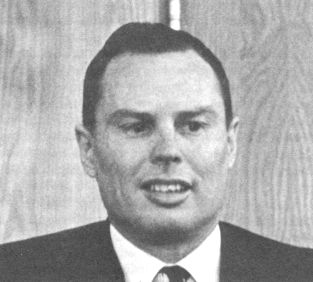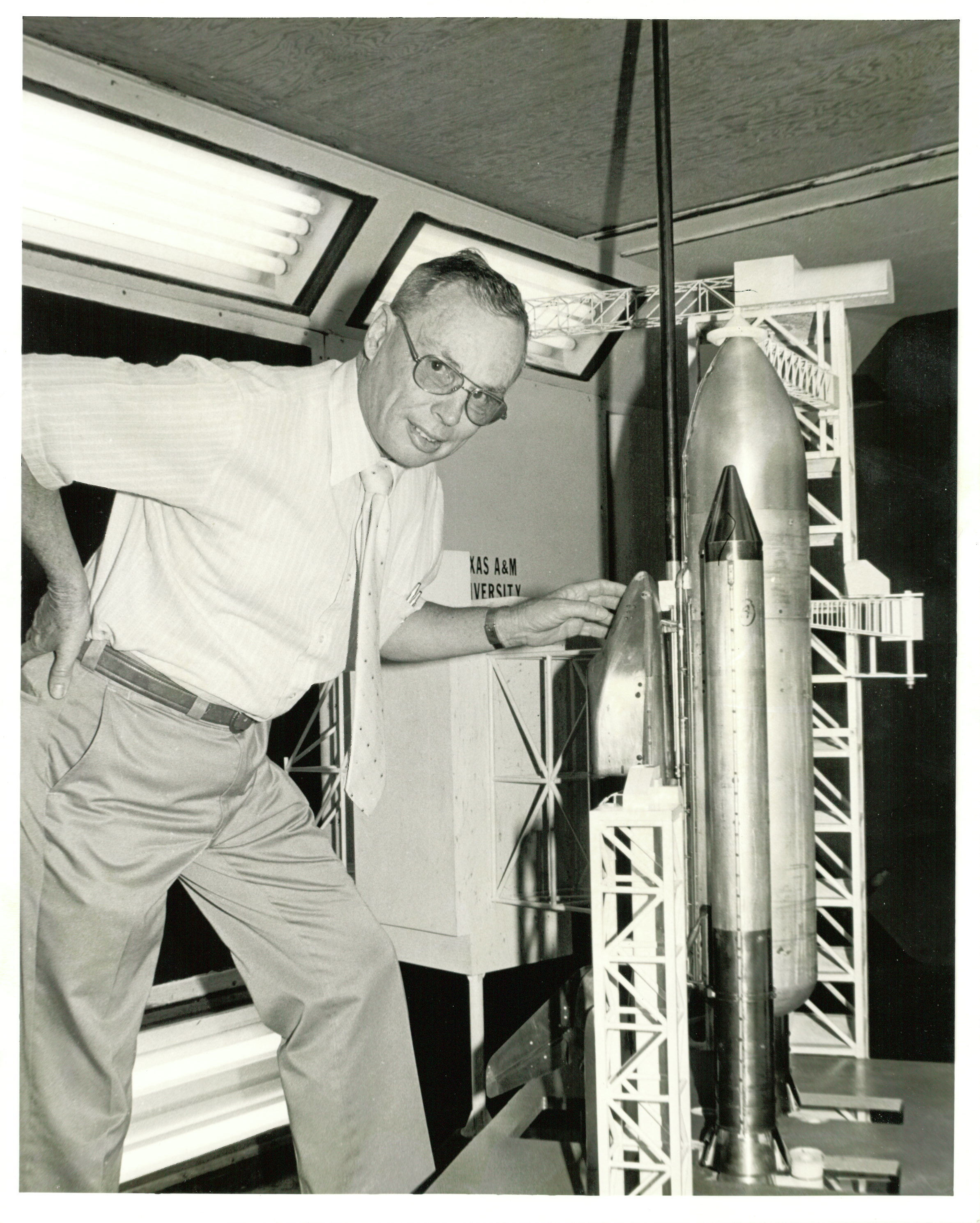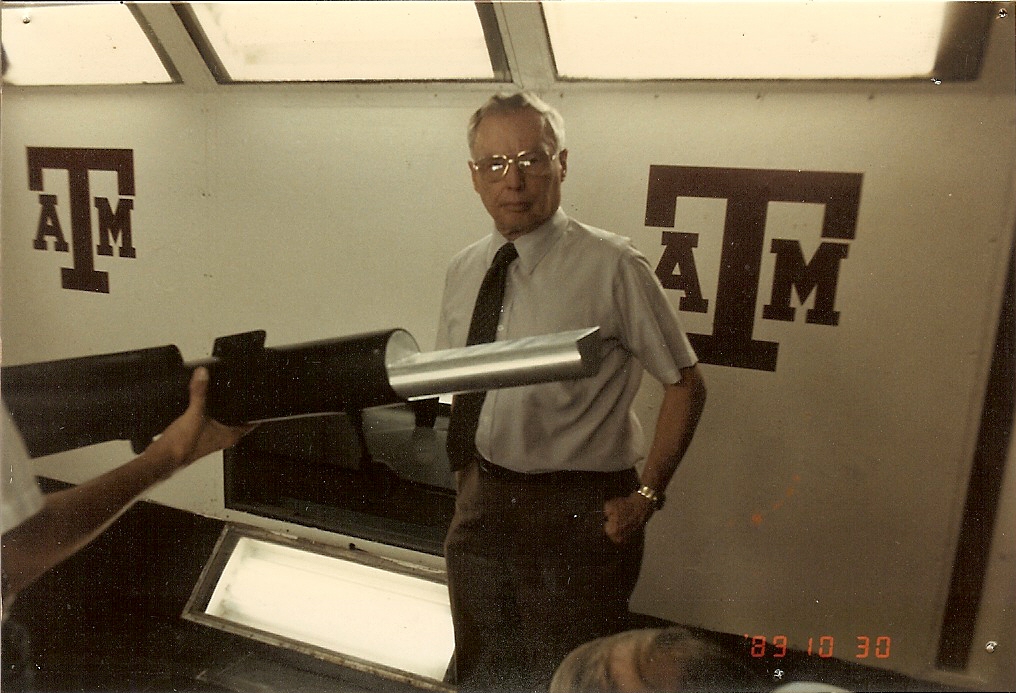The Low Speed Wind Tunnel is named for Oran W. Nicks, and rightly so. Nicks worked at NASA for 20 years before joining Texas A&M as the director of the Low Speed Wind Tunnel where he served for 16 years before retiring. While he was director, Nicks chaired the Space Grant Consortium, led the Space Research Center within TEES, and greatly improved the tunnel itself.
Major General Thomas G. Darling compiled wonderful memories of Nicks and important dates in his life in the “Life History of Oran Wesley Nicks 1925-1998,” many of which are cataloged below.
Oran W. Nicks was born on February 2, 1925 in Eldorado, Texas and grew up in Fort Stockton where he graduated high school in 1942. Following graduation, he studied aeronautical engineering at the Spartan College of Engineering in Tulsa and received a degree in 1943. With degree in hand, Nicks then joined the Army Air Corp training as an aviation cadet. World War II ended before he received a commission, but he earned his pilot’s license in 1945. After the war, Nicks went back to school and earned a degree in Mechanical Engineering from the University of Oklahoma in 1948.
He joined North American Aviation as an aeronautical engineer in 1948 and was involved in several high profile projects including the Navaho supersonic cruise missile project. Following his 10 years at North American Aviation, he worked at Chance Vought Aircraft leading a team that developed the Scout launch vehicle that was used on numerous DOD and NASA missions.
Nicks then joined the NASA ranks as the Director of Lunar and Planetary Programs in 1960. Soon after his start at NASA, he and three others were tasked with planning and defining the Apollo Manned Lunar Landing Program. In addition to his work on Apollo, Nicks’ position at NASA Headquarters afforded him the opportunity to lead the Ranger, Lunar Orbiter and Mariner missions. Beginning in 1967, he served as Deputy Associate Administrator of Space Science and Applications as well as Associate Administrator for Advanced Research and Technology. In 1970, Nicks left NASA Headquarters to serve as Deputy Director of Langley Research Center where he was involved in numerous different projects, including the Viking Mars program and developing Space Shuttle technology.
In 1980, Nicks left NASA to serve as the wind tunnel director at Texas A&M University. According to the Link article “Memory of Oran Nicks honored at dedication,” the wind tunnel facility had deteriorated prior to Nicks’ introduction. With hard work, he revitalized the facility and brought in new customers and projects resulting in new life for the tunnel. Darling mentions that Nicks was very devoted to his work at the wind tunnel and that “his plans and hopes for this facility were noteworthy.”
In addition to his tunnel duties, he directed the Space Research Center and led the Space Grant Consortium, a collaboration between 21 universities, 18 industry parters, and two state agencies. In 1987, Governor Clements appointed him to the Texas Space Commission and he served as a chairman on the Commission from 1991 to 1992.
Outside of work, Nicks was very active in his local church and enjoyed golfing, but his passion was flying. He owned and flew a Cessna 182 but he had a soft spot for sailplanes. Sailplanes are gliders that are tugged aloft on a rope by a powered aircraft which releases the rope at a designated altitude. Once the sailplane is released, it remains in the air by riding air thermals. Nicks traveled all over the world to compete in competitions, was a member of the International Gliding Commission, and even helped develop a glider prototype. He was a strong proponent for establishing soaring as an Olympic sport and built a World Class Glider himself.
Unfortunately, after spending 4 years to build his glider, Nicks’ life ended on only his 8th flight when he crashed on September 23, 1998.
However, his greatest sailplane honor was awarded posthumously in 1998 when he won the Lilienthal Gliding Medal. The Lilienthal Medal is the highest soaring award in the world and was given to Nicks for his work on the Sailplane Development Panel of the International Scientific and Technical Soaring Organization (OSTIV) and his leadership in the development of the World Class Glider.


